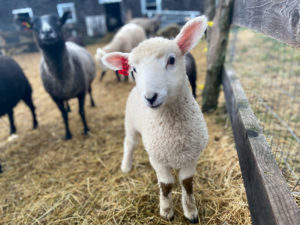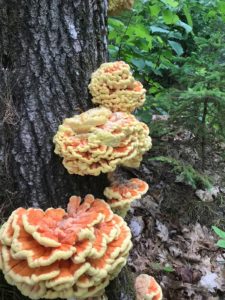Well, it hit. The first frost, I mean. The farm had its first frost in the wee hours of Thursday night/Friday morning. This means that: a) the growing season is closer to the end than the beginning, and b) we need to act on storing away all this good food for the winter.
Truth be told, we started in on food preservation awhile back, but it all takes on a certain degree of earnestness with the threat of colder days and nights looming. The freezers are filling with basil stored in olive oil, bagged tomato sauce, and pork freshly back from the slaughterhouse. The root cellar is stocked with potatoes, garlic, and turnips. The winter squash, sweet potatoes, and onions are harvested and curing for long-term storage. Carrots, beets, leeks, celeriac, and parsnips will stay in the ground for a few more weeks.
Last Friday marked a significant shift on the farm, as we harvested all of the tomatoes – the almost ripe and 100% green – and then pulled the tomato plants out of the high tunnel. This shift opens up that growing space for fall greens – mustards like tatsoi, ruby streaks, and arugula for salad and braising greens, and kale and spinach for harvesting far into the winter and then first thing again in the spring. The floor of the farm office is a thing of beauty right now, all covered with green tomatoes:

Whether you have two tomato plants or two hundred, there will come a time when you will have green tomatoes that just aren’t going to have time to ripen on the vine. What then? We have a few options right now, which we’re employing in this order:
- Leave the tomatoes in a clean, warm-ish place to continue ripening (ie, the floor of the farm office). For the next few weeks we’ll do our normal harvests in the field on Mondays, Wednesdays, and Fridays, and then we’ll head inside to check on and grab any tomatoes that are ready. Some people will wrap tomatoes in newspaper at this point – they’ll ripen faster that way. For us, that’s a lot of wrapping and unwrapping to do on a regular basis, so we’ll just let nature do it’s ripening work more slowly out in the open. One year we let the green tomatoes vine ripen after we pulled the plants: we pulled the plants out of the ground and hung them upside down in a spare, unfinished room in the back of the dining hall (now our pasteurization room). It was a space-intensive method, but it felt exciting and special turn the empty room into a garden, and the tomatoes did ripen more quickly that way.

- If we get to the point that we need to move on (maybe the tomatoes just aren’t ripening further in the cool office, and we want to use them before they start to rot, or the kitchen says, “No more tomatoes! Enough already!), we’ll make some green tomato salsa, green tomato relish, green tomato pie, or – thank all goodness and cross your fingers – fried green tomatoes.
- Lastly, if there is any waste from our tomatoes (the plants themselves, any green tomatoes that we do not use, rotten tomatoes), we compost these separately at a satellite compost system a little ways away from our farm. Tomatoes are disease-prone, so we tend to avoid introducing any waste from the nightshade family (potatoes, tomatoes, peppers, tomatillos, etc.) into the compost that might be spread on future tomato plants . . . just in case the diseases over-winter.












